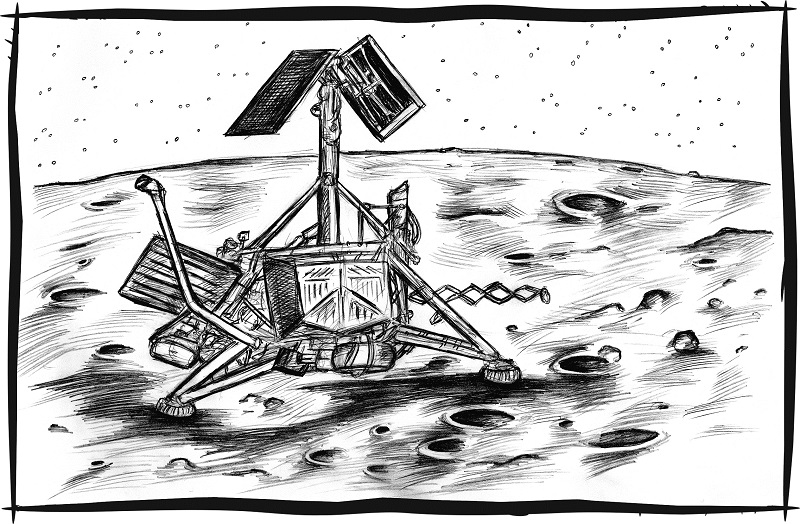
Last week, we marked the anniversary of Surveyor 6’s historic liftoff from the moon. On Nov. 17, 1967, Surveyor became the first spacecraft to lift off from the lunar surface on its own power. Its eight foot journey paved the way for the Apollo 11 flight that brought men to the moon and back in 1969.
Because of this anniversary, I decided to look further into Surveyor 6 this week. The Surveyor project began in 1966 as an exploratory effort to land on the moon, in preparation for the manned landings that would eventually take place during Apollo. Surveyor was itself the successor to the Ranger program, which obtained close-up images of the moon’s surface.
The original idea for Surveyor was slightly more ambitious: NASA wanted to deliver more than two dozen scientific instruments as early as 1963. In the end, the seven craft did make it to the moon, although two – Surveyors 2 and 4 – crashed or failed to communicate during their lunar impact.
The Surveyors were launched by the Atlas-Centaur, which dropped them into a flight path that would send them on a trajectory toward the moon.
Hughes Aircraft Co. served as spacecraft system contractor to JPL, which managed the project.
The Surveyors’ landing was directed from the ground, a new development compared to the Ranger project. The three rocket engines used to steer the robotic landing were controlled by a four-beam spacecraft radar.
Surveyors 3, 5, 6, and 7 used robotic arms with a scoop and chemical element analyzers, which allowed them to identity the materials making up the lunar surface.
Similarly to the other spacecraft in the Surveyor program, Surveyor 6 weighed 299.6 kilograms at launch and was composed of a tripod of aluminum tubing and three hinged legs. Inside the tripod, braces provided surfaces for the power, communications, propulsion, flight control, and payload systems.
Power came from a 0.855 square meter array of solar cells, which could generate up to 85 Watts of energy. This was then stored in rechargeable silver-zinc batteries. A large planar array high gain antenna facilitated communications, including television images.
In order to maintain the craft’s temperature, it was painted white, the aluminum polished to a shine on the underside. A high IR-emittance thermal finish also contributed to thermal control. Two thermally-controlled compartments were mounted on the structure: one, held at 5 – 50 degrees Celsius, contained the electronics for the communications and power supply. The second, held at between -20 and 50 degrees Celsius, contained the command and signal processing components.
Surveyor 6’s television survey camera was slightly more advanced than Surveyor 5’s, with polarizing filters and three auxiliary mirrors instead of two, as well as a new type of glare hood.
In order to ‘hop’ the craft across the lunar ground, its vernier engines were fired for 2.5 seconds. It was then able to take images of its own landing site and provide NASA with information about the effects of firing rocket engines onto the moon.
Since finding a way to land on the moon was the Surveyor project’s primary goal, it contributed directly to Apollo. The Surveyors helped NASA choose which locations on the moon would be best for landing, and then tested landing techniques. They also took images of the moon’s surface.
The Surveyors were also an important part of the space race. The United States and Soviet Union were neck-and-neck in their progress to put landers on the moon, with the Soviet Luna 9 having landed on the moon in the February before Surveyor 1 arrived in June 1966.
After their missions were done, all seven Surveyor spacecraft were left on the moon, except for parts of Surveyor 3, which were picked up by the crew of Apollo 12 and brought to the National Air and Space Museum in Washington, D.C.
Filed Under: Aerospace + defense




